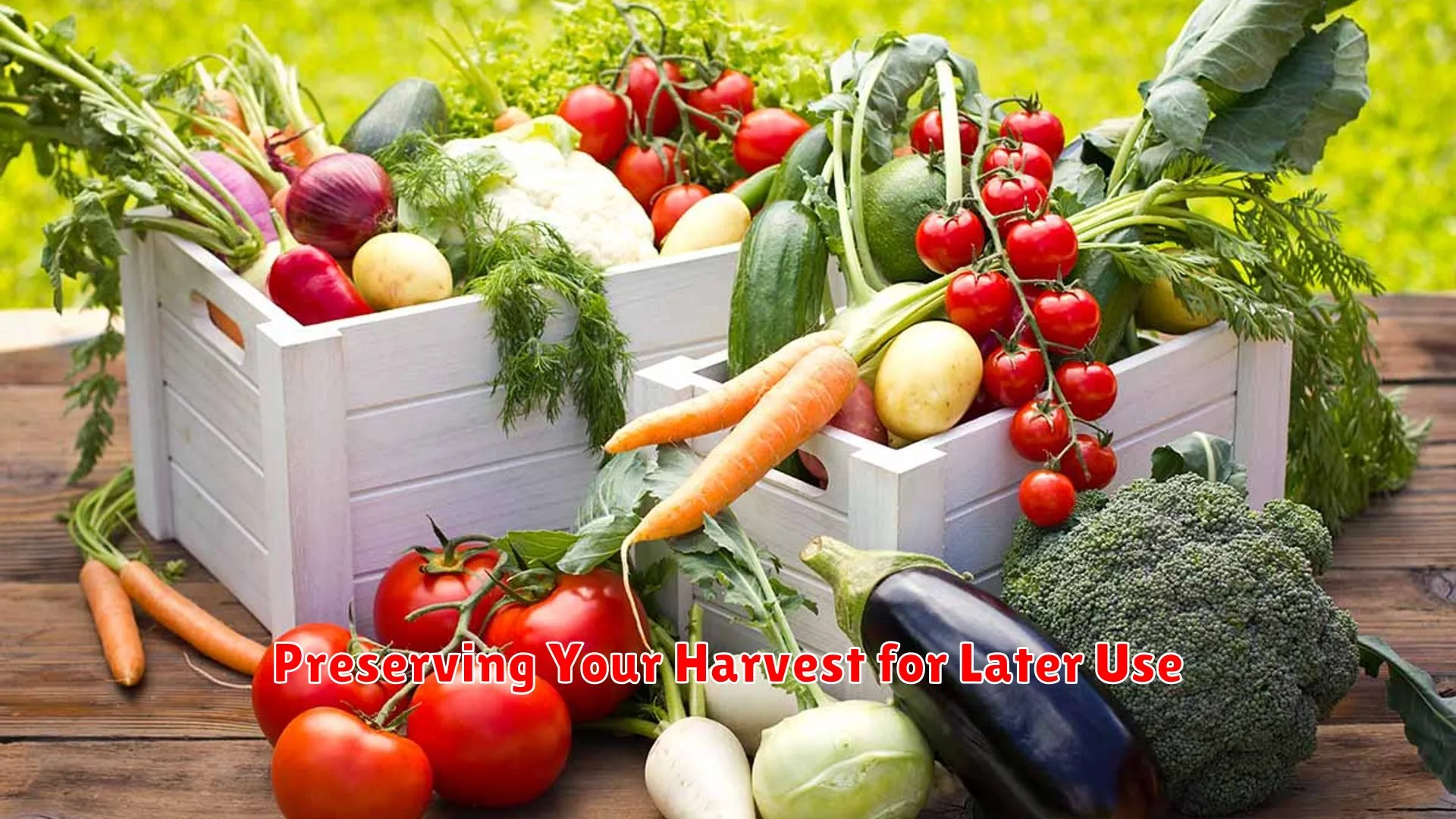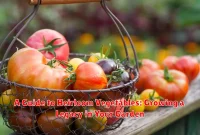Discover exciting ways to utilize your homegrown produce in the kitchen with our comprehensive guide on transforming your garden harvest into delicious meals in our article, “Garden to Table: Fresh Ideas for Cooking with Homegrown Produce.”
Harvesting Your Garden’s Bounty

When it comes to enjoying the fruits of your labor in the garden, there’s nothing quite like harvesting your own fresh produce to create delicious meals. In this article, we’ll explore some fresh ideas for cooking with homegrown produce, bringing the essence of your garden straight to your table.
1. Pick at the Peak
To fully savor the flavors of your homegrown vegetables and fruits, it’s essential to pick them at their peak ripeness. This ensures that you’re getting the most nutrition and taste from your harvest.
2. Embrace Seasonal Cooking
One of the joys of garden-to-table cooking is working with the seasonal abundance of your garden. Embrace seasonal cooking by incorporating ingredients that are ripe and ready for harvest in your dishes. This not only enhances the taste but also connects you to the rhythm of nature.
3. Get Creative with Recipes
Experiment with new recipes that highlight the freshness of your homegrown produce. From garden-fresh salads to roasted vegetable medleys, there are endless ways to showcase your bounty in the kitchen. Don’t be afraid to get creative and try out different flavor combinations.
4. Preserve for Later
If you have a surplus of produce, consider preserving them for later use. Canning, freezing, or drying your fruits and vegetables allows you to enjoy the flavors of your garden all year round. It’s a wonderful way to extend the life of your harvest.
Sharing the fruits of your garden with friends, family, or neighbors can bring joy and foster community connections. Whether you exchange produce or cook a meal to share, spreading the goodness of your garden can create moments of happiness and gratitude.
Simple Recipes for Fresh Produce

Welcome to our guide on simple recipes for fresh produce! In this article, we will explore creative and delicious ways to make the most of your homegrown fruits and vegetables. Cooking with ingredients straight from your garden can elevate your dishes to a whole new level of freshness and flavor. Let’s dive in and discover some delightful recipes that highlight the beauty of farm-to-table cooking.
1. Caprese Salad
A classic and refreshing dish that celebrates the flavors of ripe tomatoes, fresh basil, and creamy mozzarella. Simply slice the tomatoes and mozzarella, layer them with basil leaves, drizzle with olive oil, balsamic glaze, and sprinkle with salt and pepper. A perfect appetizer for any meal.
2. Grilled Veggie Skewers
Fire up the grill and enjoy the natural sweetness of grilled vegetables. Thread a variety of veggies like bell peppers, zucchini, cherry tomatoes, and onions onto skewers. Brush with olive oil, sprinkle with herbs like rosemary or thyme, and grill until tender and slightly charred.
3. Berry Smoothie Bowl
Start your day with a burst of energy from a colorful berry smoothie bowl. Blend together mixed berries, banana, yogurt, and a splash of milk until smooth. Pour into a bowl and top with granola, sliced fruits, and a drizzle of honey for a healthy and satisfying breakfast.
4. Roasted Vegetable Pasta
A comforting and wholesome meal that is easy to prepare. Toss a mix of roasted vegetables such as eggplant, bell peppers, and cherry tomatoes with cooked pasta. Add a dollop of pesto or marinara sauce, sprinkle with Parmesan cheese, and enjoy a hearty pasta dish packed with garden-fresh goodness.
5. Citrus-infused Water
Stay hydrated with a refreshing drink infused with citrus fruits from your garden. Simply slice lemons, limes, and oranges and add them to a pitcher of water. Let it chill in the fridge for a few hours to allow the flavors to meld, creating a delicious and thirst-quenching beverage.
Conclusion:
Explore these simple recipes to make the most of your homegrown produce and savor the flavors of your garden in every bite. Whether you’re a seasoned gardener or new to growing your own food, these recipes will inspire you to get creative in the kitchen and enjoy the bounties of nature.
Preserving Your Harvest for Later Use

After harvesting fresh produce from your garden, you can extend the enjoyment of your homegrown fruits and vegetables by preserving them for later use. There are several methods you can use to store and preserve your harvest, ensuring that you have access to nutritious, flavorful ingredients all year round.
Canning
Canning is a popular way to preserve fruits and vegetables. It involves sealing food in jars and heat processing to kill bacteria and create airtight conditions. You can can fruits in the form of jams, jellies, or fruit preserves, and vegetables like tomatoes, pickles, and beans.
Freezing
Freezing is another simple and effective preservation method. Many fruits and vegetables can be frozen for later use. Simply wash, chop, and place them in airtight containers or freezer bags before storing them in the freezer. Frozen produce can be used in soups, smoothies, and other dishes.
Drying
Drying is a great way to preserve herbs, fruits, and vegetables that have a low water content. You can air dry herbs by hanging them upside down in a well-ventilated area, or use a dehydrator to dry fruits and vegetables at a low temperature. Dried produce can be stored in jars or containers for long-term use.
Pickling
Pickling involves preserving fruits and vegetables in a solution of vinegar, salt, and spices. This method not only preserves the produce but also enhances their flavor. Pickled vegetables like cucumbers, carrots, and onions make great additions to salads, sandwiches, and charcuterie boards.
Conclusion
Embracing homegrown produce in cooking brings freshness and flavor to your meals. From garden to table, the journey enhances sustainability, taste, and connection to food.




